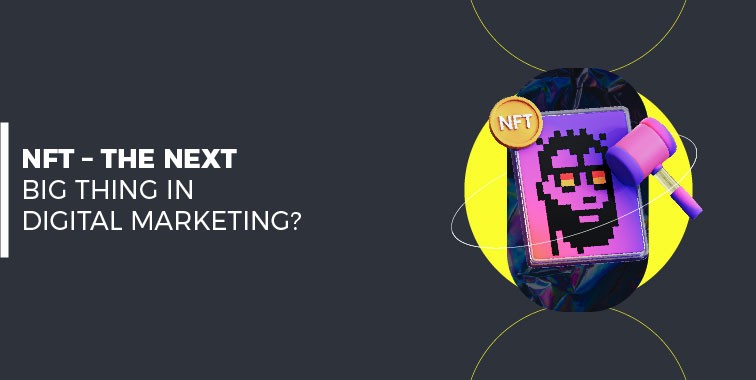NFT – the Next Big Thing in Digital Marketing?
Described as a digital asset with unique characteristics, non-fungible tokens (NFT) are a particular type of cryptographic token.
It operates similarly to Bitcoin (and other cryptocurrencies), where network computers compete to solve mathematical problems to encrypt a dataset and generate a cryptographic key. Only NFTs are not interchangeable; they are non-fungible, in contrast to other token types.
As NFTs are minted on blockchains, they’re individually equipped with a unique proof of ownership that is both secure and decentralized. They also feature “smart contracts” that enable their creators to receive royalties from every future resale, depending on the contract’s structure.
The first wave of NFT adoption has consisted mostly of digital collectibles, with NBA Top Shot being one of the most successful examples.
The platform allows fans to buy, sell and trade numbered versions of video highlights from NBA games, the digital equivalent of a physical basketball trading card system.
A LeBron James highlight, for example, was sold for $200,000, and the platform has generated over $308 million in gross sales.
NFT technology has prompted other brands to dip their toes into digital collectibles, as well. Fast food giants McDonald’s and Taco Bell, for instance, were among the first to create campaigns around NFTs, selling digital Big Mac and Taco Art to their customers.
The first luxury brand operating in the NFT space, has been a runaway success, with its virtual sneakers selling for the same prices as haute couture. Kering’s powerhouse Gucci is also said to be releasing its own NFTs soon.
A digital hash is assigned to each non-fungible token during encryption, which differentiates it from all other NFTs of its kind. It acts as a fingerprint: no two are alike.
NFTs can be used to verify an item’s authenticity by using them as serial numbers. A central authority does not issue the serial numbers, nor do new Bitcoins come from a central bank. The vast majority of NFTs today are based on Ethereum.
NFTs are designed to represent specific parts of digital assets, and the blockchain network verifies each.
Non-fungible tokens are the future of content marketing because they have their unique identifier encrypted every time they are bought and sold to indicate ownership.
This means that anyone who has access to the network can view the owner’s information, but the NFT cannot be accessed without the cryptographic key that the owner possesses.
NFTs are most frequently created as image files. Twitter, MP3s, and other digital files can also be attached to them. NFT allows you to own and trade digital assets, which are widely available and easy to copy, to begin with.
So, what are some takeaways with regards to non-fungible tokens in the context of digital marketing?
- NFTs can be viewed as a way to directly connect to your fanbase: ownership is a powerful idea and establishes a closer relationship between your customer and your brand. For example, NFTs allow musicians to sell their music directly to the fans instead of going through streaming platforms.
- NFTs can be anything digital: a JPEG, a GIF, a 3D animation, a VR artwork, etc. Your brand is no longer restricted to offering physical products or services, but virtual products.
- NFTs eliminate business friction like shipping costs, product defect rates, and storage costs. They can therefore be a superior solution depending on your goals. Ultimately, luxury brands are not driven by selling physical products so much as by selling the brands themselves—so why not sell them virtually?
Contrary to popular belief, Lorem Ipsum is not simply random text. It has roots in a piece of classical Latin literature from 45 BC, making it over 2000 years old. Richard McClintock, a Latin professor at Hampden-Sydney College in Virginia, looked up one of the more obscure Latin words, consectetur, from a Lorem Ipsum passage, and going through the cites of the word in classical literature, discovered the undoubtable source. Lorem Ipsum comes from sections 1.10.32 and 1.10.33 of “de Finibus Bonorum et Malorum” (The Extremes of Good and Evil) by Cicero, written in 45 BC. This book is a treatise on the theory of ethics, very popular during the Renaissance. The first line of Lorem Ipsum, “Lorem ipsum dolor sit amet..”, comes from a line in section 1.10.32.




